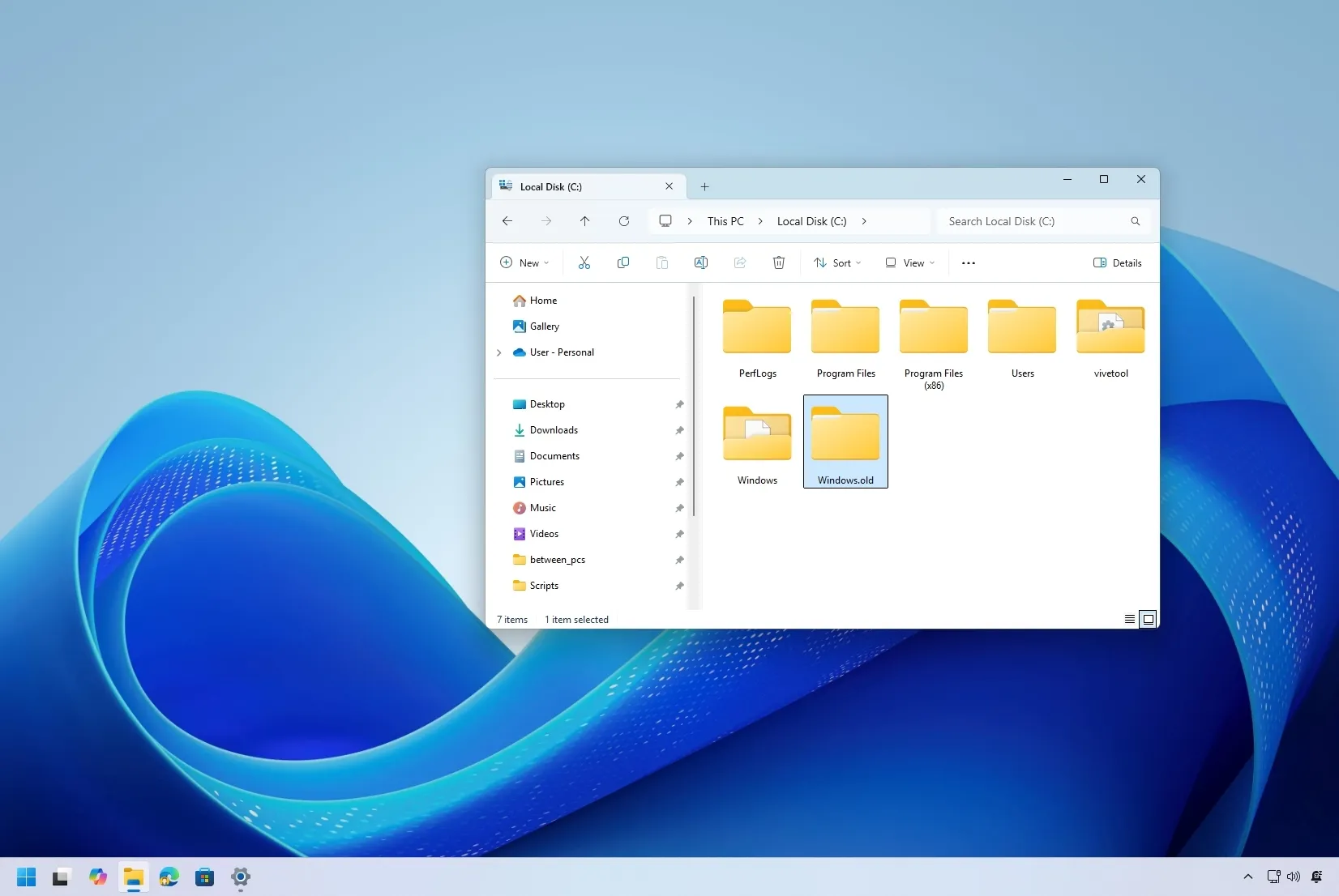How to recover your files from the Windows.old folder

- To recover files after a Windows 11 (or 10) upgrade, open File Explorer > C > Windows.old > Users, open your profile folder, and copy the files to a new location.
If you recently performed an in-place upgrade on your computer to a newer version of Windows 11 (or 10), and you didn’t erase the previous setup, you can still retrieve your files from the previous installation from the “Windows.old” folder.
When you proceed with an upgrade, the setup doesn’t erase the previous installation. Instead, it creates a temporary backup of the installation files, including your files, in the “Windows.old” folder in case the system needs to roll back because of an issue during the installation process. After the installation, the folder is kept for ten days in case you have to manually uninstall the newer version of Windows or revert back to the previous version of Windows.
The setup should transfer your files automatically to the new installation, but if your files are missing after the upgrade, you may be able to recover them from the “Windows.old” folder.
In this guide, I will explain the steps to recover your documents, pictures, and other files from a previous installation of Windows 11 (or 10). You can also refer to these instructions if you happen to be using Windows 8.1, 7, or even an older version.
Recover files from the Windows.old folder upgrade an upgrade
To retrieve your files from the Windows.old folder, use these steps:
-
Open File Explorer.
-
Click on This PC from the left pane.
-
Right-click the “C:” and choose the Open option.
-
Confirm the Windows.old folder is available.
Quick note: If the folder isn’t available, you cannot retrieve the files. If this is the case, you will have to restore the files from a previous backup.
-
Open the Windows.old folder, then access the Users folder and open your profile folder.
-
Open the folder containing your missing files.
-
Select the files and folders and click the Copy button from the command bar.

-
Open a folder location to restore the files.
-
Click the Paste button from the command bar.
Once you complete the steps, you may need to repeat the instructions to recover additional files.
In these instructions, I assume your files were in your user profile folder. However, if you stored your file in another location, you have to locate the correct folder inside “Windows.old.” Also, this solution only works for in-place upgrades, not clean installations, because this process erases everything for the drive.
Although missing files after an upgrade is a rare occurrence, I always recommend creating a full backup of your computer before proceeding with an upgrade because you never know when it may happen.
Did you find your files after the upgrade? Let me know in the comments.
Why You Can Trust Pureinfotech
The author combines expert insights with user-centric guidance, rigorously researching and testing to ensure you receive trustworthy, easy-to-follow tech guides. Review the publishing process.
Source link


